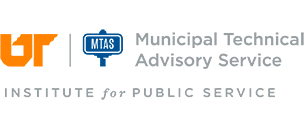Managing Infiltration Inflow
There are two primary approaches to managing infiltration and inflow (I/I) problems: the outside-expert approach and the operator-driven approach. The outside-expert approach is usually more costly and time-consuming, and its effectiveness can vary. The operator-driven approach generally requires less investment and can produce faster results, though it may also have limitations. In many cases, the most effective solution combines elements of both approaches.
The Outside-Expert Approach
This approach typically involves hiring consultants to conduct a Sanitary Sewer Evaluation Study to identify sources of I/I and recommend corrective actions.
The Operator-Driven Approach
Using internal staff and resources, utilities can take a systematic approach to identify and address I/I issues. Key steps include:
- Map the Collection System – Ensure you have accurate maps of the sewer network.
- Gather Pump and Treatment Data – Collect flowcharts for pump stations and treatment plant capacities, including run times. (Note: run-time meters are required at all pump stations.) Pump capacities can be verified using manufacturer specifications or system documentation.
- Install Long-Term Flow Monitors – Place monitors at strategic locations throughout the system to track flows over time.
- Graph the Data – Visual representations of flow data help reveal patterns and problem areas.
- Analyze Likely I/I Sources – Staff familiar with the system should review maps, pump run times (covering both wet and dry seasons), overflow records, rainfall data, and other system knowledge to identify potential problem areas.
- Document Overflows and Complaints – Record all pump station overflows, sewage backups, and surcharging manholes.
- Inspect Priority Areas – Start with the worst areas identified in the analysis and walk the sewer lines to look for problems.
- Conduct Nighttime Flow Isolations – Water present in the lines at night is likely from an I/I source.
- Review Maintenance Practices – Clean lines, manholes, forced mains, and siphons to ensure proper function.
- Investigate the System in All Conditions – Repeated inspections across different seasons and weather conditions using visual inspections, smoke testing, dye testing, temperature measurements, and CCTV.
- Use Appropriate Inspection Techniques – Televise lines below the groundwater table; smoke test lines above it.
- Repair and Document – Fix identified inflow points and bundle infiltration data for potential use by consulting engineers.
Choosing the Appropriate Method
- If the system primarily suffers from widespread infiltration, the outside-expert (traditional) approach may be more effective.
- If inflow is the main issue, the operator-driven approach may be sufficient.
Studies show that both approaches share many elements, making it relatively easy to transition to the outside-expert approach if internal efforts do not resolve the problem.
Note: Before deciding which approach to use, it is critical to clearly define the I/I problem in your system.
